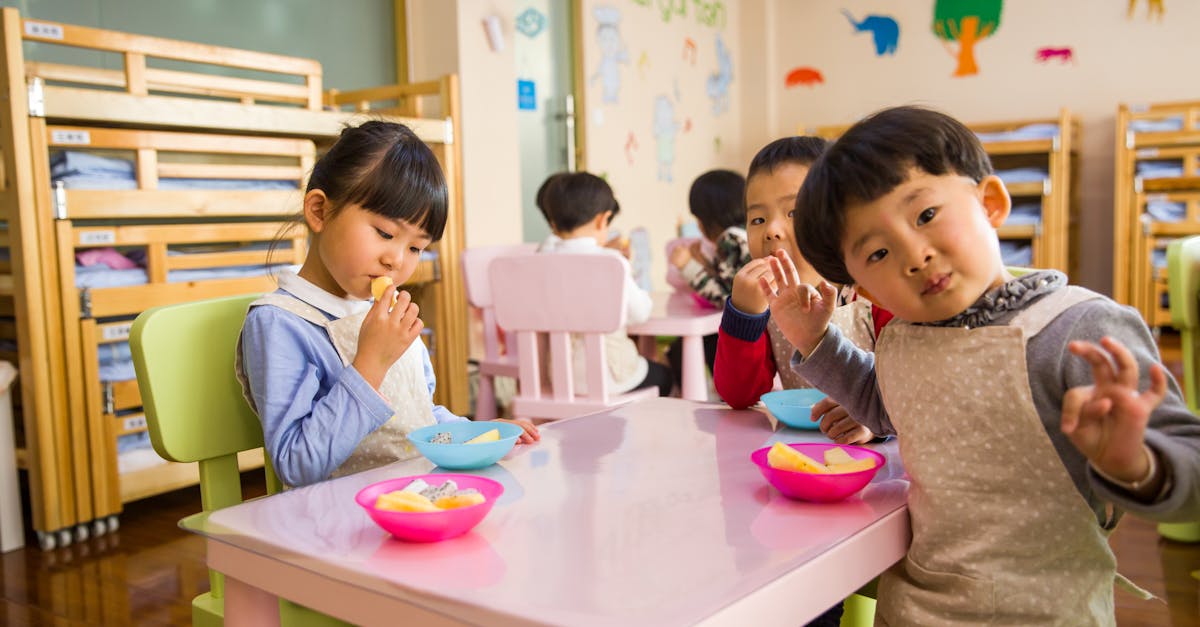Unplugging Distress, Plugging Peace: Nurturing Kids’ Tranquility in a Digital World

Welcome to the world of modern parenting, where the challenge of balancing kids’ tech consumption with moments of serenity has become an essential focus. As screens increasingly dominate our children’s daily lives, it’s imperative to understand how this affects their mental well-being. In this article, we delve into the pressing impact of excessive screen time on kids, while highlighting the powerful role that mindfulness, through Calm apps, can play in promoting relaxation and mental wellness for our youngsters. Furthermore, we’ll explore effective strategies for achieving a harmonious balance between technology and mindfulness, offering real-life stories and research findings that demonstrate the positive impact of this equilibrium on our children’s lives.
1. The Impact of Technology on Kids’ Serenity
In today’s digital age, kids are navigating a world where screens have become companions, teachers, and playmates all at once. With this constant exposure to technology comes an important question: How does excessive screen time impact our children’s mental well-being? Recent studies have shown that prolonged screen time can lead to a range of effects, including decreased quality of sleep, heightened anxiety, and a decrease in overall emotional well-being. Understanding these impacts is crucial as we strive to nurture our children’s mental and emotional health. As parents and caregivers, it’s essential to be mindful of the quantity and nature of our children’s screen time, setting boundaries to ensure they have time for other beneficial activities. It’s about creating a balance that allows for both enjoyment of technology and moments of peace and calm. By understanding the effects of excessive screen time, we can take necessary steps to safeguard our children’s serenity and mental well-being.
Screen Time Statistics
Let’s take a closer look at the latest statistics surrounding kids’ screen time and the potential impact on their mental well-being. Recent data has revealed a significant surge in screen time among children, with hours spent on digital devices increasing steadily over the years. The average daily screen time for kids has risen, leading to concerns about the potential effects on their mental health. Studies have indicated a correlation between excessive screen time and a decline in overall well-being, including increased stress and anxiety levels. These statistics highlight the growing influence of technology on our children’s daily lives, prompting a closer examination of its repercussions.
Tech-Overload Stress
In today’s digital era, the prevalence of tech-overload stress among children is a topic that demands our attention. The constant bombardment of digital stimuli has given rise to a concerning trend: stress and anxiety in kids. A growing body of research has shed light on the impacts of excessive technology use, revealing its potential to elevate stress levels and contribute to feelings of overwhelm in children. The pressure to keep up with virtual interactions, incessant notifications, and the allure of endless online content can create a sense of unease and restlessness, affecting our young ones’ mental well-being. As caregivers and educators, it’s crucial to be aware of these effects, offering support and guidance to help children navigate the digital world without succumbing to overwhelming stress.
2. Introducing Mindfulness with Calm Apps

Amidst the hustle and bustle of today’s fast-paced world, Calm apps offer an oasis of mindfulness for children, promoting mental wellness and relaxation. These innovative platforms have become essential tools in nurturing emotional and mental well-being in our youngsters. Mindfulness practices in Calm apps are designed to introduce children to techniques that encourage self-awareness, relaxation, and emotional regulation. By incorporating soothing sounds, guided meditations, and calming visuals, these apps provide kids with a sanctuary for recharging and finding inner peace. Moreover, they offer a valuable opportunity for children to develop essential life skills that can help them navigate stress and uncertainty with resilience and composure, contributing to their overall mental wellness.
Benefits of Mindfulness
Mindfulness has emerged as a powerful ally in nurturing a child’s emotional and mental well-being. By encouraging children to engage in mindfulness practices, we empower them with valuable tools to navigate their emotional landscape with grace and resilience. Research has demonstrated that mindfulness can positively impact a child’s emotional state, fostering qualities such as self-awareness, compassion, and emotional regulation. By learning to be present in the moment, children can develop a deeper connection with their thoughts and emotions, leading to increased clarity and improved mental well-being. Furthermore, mindfulness has been shown to reduce stress and anxiety in children, offering them a sense of calm and balance as they encounter various challenges in their daily lives. Embracing mindfulness can equip children with essential skills that not only benefit their emotional and mental state now, but also lay a strong foundation for their well-being in the future.
Understanding Calm App Sessions
Calm app sessions for kids offer a treasure trove of features and benefits designed to nurture their mental well-being. These sessions typically include guided meditations, storytelling, breathing exercises, and soothing sounds, all tailored to capture the attention and imagination of young users. Through visually engaging and age-appropriate content, Calm app sessions provide children with a serene space to explore mindfulness and relaxation. Additionally, the positive impact of these sessions extends beyond the immediate moment, offering children valuable life skills that can bolster their emotional resilience and enhance their overall well-being. By discovering and actively engaging with these features, children can embrace a sense of tranquility, learn to manage their emotions, and build a strong foundation for mental and emotional wellness that will serve them well into adulthood.
3. Striking a Balance
Discovering the right equilibrium between screen time and Calm app sessions for children involves thoughtful strategies and nurturing routines. To strike this balance, start by setting clear and consistent guidelines for screen time, ensuring that it remains a healthy and mindful activity. It’s essential to establish reasonable daily limits and create tech-free zones in your home to encourage alternative activities, such as outdoor play, reading, or engaging in hobbies. Additionally, integrating Calm app sessions into your child’s routine can provide moments of tranquility amidst the digital buzz. Identify regular times for these sessions, such as before bedtime or after school, allowing your child to unwind and practice mindfulness in a structured manner. By infusing both screen time and Calm sessions with intention and moderation, you can foster a harmonious environment that nurtures both tech literacy and emotional well-being, helping children learn to navigate the digital world while cultivating inner calm.
Setting Screen Time Boundaries
In today’s digital landscape, setting healthy guidelines for kids’ screen usage is a vital aspect of fostering a balanced and mindful approach to technology. To establish effective screen time boundaries, begin by engaging in open conversations with your children about the purpose and limits of their screen time. This collaborative approach can help them understand the importance of moderation and the value of diverse activities beyond digital engagement. Consider implementing a consistent daily schedule that includes designated periods for screen time, ensuring that it complements other enriching activities such as outdoor play, reading, or creative hobbies. Additionally, encourage breaks during prolonged periods of screen use, allowing for moments of rest and physical activity.
Incorporating Calm Time
Incorporating Calm app sessions into a child’s daily routine can be a rewarding and nurturing experience, promoting emotional well-being and mindfulness. Start by identifying opportune moments to introduce these sessions, such as before bedtime or after school. By creating a consistent schedule, you provide your child with a reliable sanctuary for relaxation and emotional grounding. Encourage your child to explore the diverse features of Calm apps, allowing them to select sessions that resonate with their interests and emotional needs. Whether it’s guided meditations, nature sounds, or breathing exercises, these sessions can become cherished interludes in their day, offering moments to unwind and find peace amidst the busyness of life. By integrating Calm time into your child’s routine, you nurture their ability to manage stress, cultivate resilience, and embrace moments of tranquility, empowering them to navigate their emotions with mindfulness and grace.
4. The Power of Tech-Mindfulness Harmony
The synergy of technology and mindfulness has yielded heartwarming real-life stories and compelling studies that underscore the positive impact of this balance on kids. From navigating stress to fostering emotional resilience, tech-mindfulness harmony has become a beacon of support for children. Real-life experiences from parents and educators showcase transformative moments where children have found solace and emotional grounding through the use of mindfulness apps in their tech routines. Additionally, studies have revealed that this harmony contributes to improved emotional regulation, reduced anxiety, and enhanced overall well-being in children. These findings underscore the profound influence of mindfulness practices in aligning technology with emotional and mental wellness, illustrating how this harmonious integration can empower kids to engage with technology mindfully, fostering a sense of calm and emotional strength.
Success Stories
Success stories from parents and educators highlight the profound impact of integrating mindfulness into children’s technology use. Parents have reported witnessing positive changes in their children’s emotional well-being and behavior after implementing mindfulness practices alongside their technology routines. From improved focus during homework to a noticeable reduction in stress and anxiety, these firsthand accounts underscore the transformative effects of mindful tech use. Educators, too, have noted the benefits of incorporating mindfulness into the classroom, observing enhanced emotional regulation and attentiveness in students. These success stories serve as a testament to the power of tech-mindfulness balancing, revealing how simple yet intentional integration of mindfulness practices into children’s tech experiences can foster emotional strength and resilience.
Research Findings
Recent studies have shed light on the remarkable benefits of integrating mindfulness practices into children’s tech routines. These findings reveal that a balanced approach, incorporating mindfulness alongside technology use, can significantly enhance children’s emotional well-being and mental resilience. Research indicates that children who engage in regular mindfulness practices exhibit improved focus, reduced stress levels, and enhanced emotional regulation, offering them valuable tools to navigate the challenges of the digital age with grace and composure. Furthermore, these studies highlight the positive correlation between mindfulness integration and children’s overall well-being, showcasing the potential for fostering a harmonious relationship between technology and emotional health. As we continue to explore the impact of mindful tech use on children, these research findings offer valuable insights that can inform and guide parents, educators, and caregivers in promoting a healthier and more mindful approach to children’s technology consumption.
How can I determine if my child’s screen time is excessive?
Excessive screen time can be determined by considering the impact on your child’s overall well-being. Signs of excessive screen time include disrupted sleep patterns, irritability, difficulty focusing on non-screen activities, and a decline in social interactions. It’s essential to establish healthy screen time limits and observe any changes in behavior or mood related to prolonged digital exposure.
What are some effective ways to integrate mindfulness into a child’s daily routine?
Integrating mindfulness into a child’s daily routine can be achieved by creating consistent moments for mindful activities, such as incorporating short meditation sessions, mindful breathing exercises, or engaging in calming sensory experiences. Additionally, encouraging outdoor play, reading, and creative hobbies alongside mindful tech use can create a balanced routine for a child.
How can I help my child transition from screen time to Calm app sessions effectively?
Encouraging a smooth transition from screen time to Calm app sessions involves creating a calming routine. Consider implementing a gentle transition period where your child can wind down gradually before engaging with Calm app sessions. Applying this consistent transition approach can help signal to your child that it’s time to shift focus from digital engagement to mindful relaxation.




